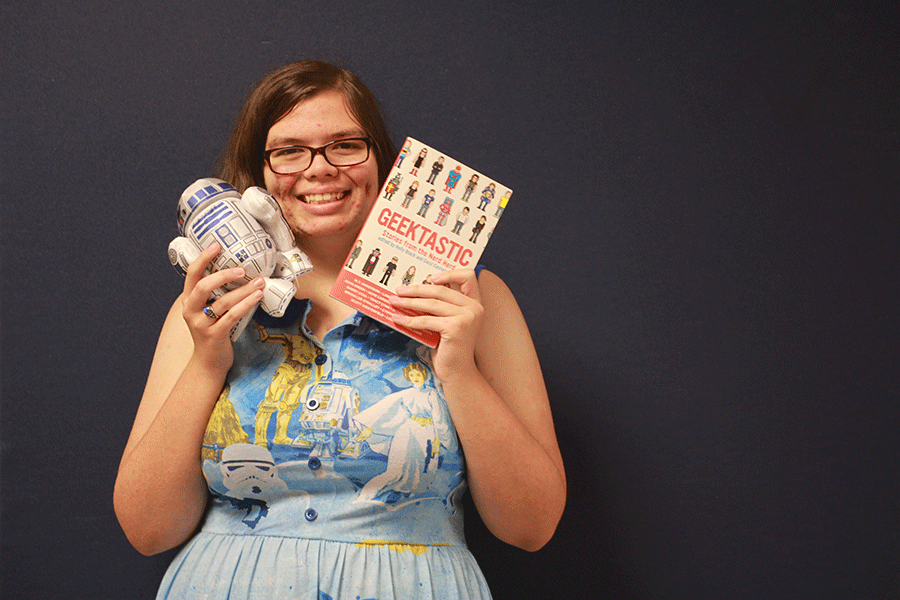Geek Guru: Is Snapchat revolutionary, or just odd?
More from Geek Guru
Some things were just bound to be short-lived fads — Silly Bandz, Flappy Bird, fro-yo shops. For the longest time, it seemed like the popular image-based chatting app Snapchat would join the ranks of things that were really cool for only a few months or so. On the contrary, Snapchat has established itself as one of the most integral apps in the social media scene. With each update, the app pushes the boundaries of what it can and should do, which makes me think — can Snapchat be stopped? And will it?
For those unfamiliar, this is the basis of Snapchat: you can send a picture, with a character-limited caption, to a friend for up to 10 seconds from time of opening. Your friend will get a notification that they received a snap, hold down their screen to view it for however many seconds you allowed. After that, the picture supposedly disappears. (At least, it does to the person who received the snap. Whether or not Snapchat itself is storing all of these images somewhere is quite the controversial topic as of late.) The only way to save a snap is to take a screenshot with your phone; however, the sender of the snap will be notified that you did so.
Originally, many dismissed this app as one intended for sexting. However, some of my friends were using it to send silly selfies, so I decided to try it out, figuring it wouldn’t last long anyway. As it turns out, Snapchat wasn’t the creepy sexting app people pinned it for — it was used just like texting, but with regular messages accompanied by a selfie or picture of the taker’s surroundings. It’s great for sending an ugly selfie you want your friend to have a good laugh at, but not be able to keep forever.
Once Snapchat survived long enough to safely be in probably-not-a-fad territory, it seems the app wanted to take on everything it possibly could. It added “stories,” which are snaps that all of your friends can view, instead of a message to specific friends. I distinctly remember several people saying the feature would never last, while now it is one of the most (if not the most) popular part of Snapchat. Text-only chatting was added — essentially text messages that disappeared after being read. Filters and new text options were also eventually added to allow for more versatile and fun snapping options.
Snapchat also tried more adventurous features for a simple communication app. Geofilters let users add a clipart-like doodle to snaps taken in well-known locations. This evolved into Snapchat stories for special events, e.g. the Oscars red carpet, the Juno Blizzard or game one of the 2014 World Series. This addition evolved the app from one for fun selfies and an alternative to texting into a way to see first-hand takes on current events. Another large jump for Snapchat was the addition of the Snapcash feature. With Snapcash, users could send money to another via chat. This feature seems very out-of-place in an app for informal communication, and I’m not really a fan of it, but it is definitely a perfect example of Snapchat pushing boundaries.
The most recent Snapchat update pushes boundaries even more. Every user has what is, essentially, their own QR Code, and other users can hover their phones over the code with the Snapchat camera open to add them as a friend. This feature makes me feel like I’m living in the future (it’s like discovering the joy of automatic doors all over again). The app also now includes a “Discover” feature, which has videos and information from popular networks such as CNN, the Food Network, ESPN, National Geographic, People Magazine and more. Is this the future of news? Will the Discover feature become as popular as Snapchat stories or will it be widely dismissed by users who just wanted to take some funny pictures and send them to their friends? I don’t know the answers to these questions yet, but time will tell.
Overall, what teens noticed most about the update really speaks to Snapchat’s humble origins. Amidst discussions of the evolution of technology and code-scanning as well as the future of convergence media, most teens just wanted to know who their bae’s best friends (a.k.a. top three people they Snapchat) are. Maybe nothing will change after all.



